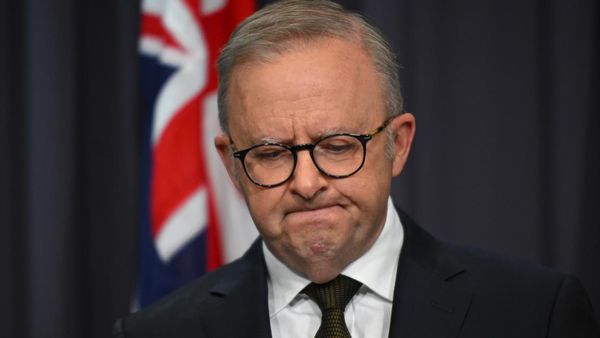
Treasurer Jim Chalmers is choosing his words carefully a month out from the federal budget as a new report reveals Australia faces more than two decades of budget deficits unless the government overhauls spending and boosts revenue.
According to a pre-budget report released by the Grattan Institute on Wednesday, Australia’s structural deficit could blow out from official estimates of almost $50 billion each year to more than $70 billion a year (in today’s dollars) by the end of the decade.
The report, written by the think tank’s Danielle Wood, Kate Griffiths and Iris Chan, suggests that “the size of the problem” can’t be solved by “one side of the budget alone” and puts forward a smattering of options including redesigning controversial stage three tax cuts and slashing super tax concessions.
Speaking to ABC Radio National on Wednesday morning, Treasurer Jim Chalmers said the government had some “common ground” with what was put forward in the report, pointing to the government’s efforts to increase the tax rate on super balances above $3 million, and its appetite to make changes to the petroleum resource rent tax (PRRT).
Chalmers, however, wouldn’t be drawn into discussion over a redesign of the stage threes, which the government appears determined to deliver as promised, and declined to get into which recommendations the government would consider, and which it would rule out.
He instead turned attention instead to slated energy bill relief set to arrive as part of the government’s May budget.
“What we will try and do in this budget, just like we did in October, is find the best combination of trimming spending and redirecting it to areas which are more important to us, some sensible tax changes, whether it’s multinationals or superannuation, and spending restraint so that we can make our Budget as resilient as it can be,” Chalmers said.
On the revenue side, reducing or “better targeting” tax concessions on superannuation could save the government more than $11.5 billion each year, the report said, alongside a number of other cuts to income tax breaks, which raise as much as $20.8 billion in revenue every year.
Super tax concessions cost the budget about $45 billion a year, according to the report, and are projected to cost more than the age pension by 2036.
“These tax breaks predominantly benefit the top 20% of income earners, who are unlikely to qualify for an age pension. Without change, superannuation risks becoming a taxpayer-funded inheritance scheme,” the report’s authors said.
In February, the government announced that it would raise the tax on super balances above $3 million from 15% to 30% in a bid to make the super system fairer and raise more than $2 billion in revenue each year.
The Grattan report also suggests the government consider redesigning the stage three tax cuts so they are “less generous” to the nation’s top earners.
The cuts, which are the final phase of the former Morrison government’s tax plan, will do away with the 37% tax bracket altogether, lower the 32.5% bracket to a flat 30%, and raise the threshold for the top tax bracket from $180,001 to $200,001.
In effect, the cuts will see those with an annual income of $200,000 end up paying the same rate of tax as someone earning little more than the minimum wage.
The Grattan report suggests keeping the 37% tax bracket in order to “reduce their generosity at the top end”, as part of a broader sweep of income tax reform.
“It should start with plugging ‘leakages’ in the income tax system,” the report says, referring to costly tax breaks that are coming at a “growing cost to the budget”, which has been in deficit since the 2008-9 financial year.
Broader tax reform could include an increase to the GST “in conjunction with targeted increases in welfare and reductions in income taxes” that would increase revenue and broaden the tax base.
According to researchers at Grattan, reducing super tax concessions could emerge as one of the most politically challenging to push through. The stage threes, meanwhile, carry a softer political warning label.
Among the report’s cost-saving suggestions were cuts to “wasteful” spending on major defence and transport projects to pocket savings in the order of billions, along with winding up Western Australia’s GST arrangement and reducing spending on politicised grants and advertising.
It also suggests hemming in the National Disability Insurance Scheme, which is set to cost about $35 billion this year and expected to grow to as much as $100 billion each year by 2033.
More effectively tackling fraud and rolling out accreditation for professionals who help people get on to NDIS plans should be included in the government’s upcoming review, the think tank said, as well as scope for state governments to step up their support.
“The very high rates of young people accessing the NDIS — for example, 9% of boys aged five to seven are on the NDIS — is evidence of many flocking to the scheme who may be more cost-effectively supported outside it,” the report said.
Aged care has also seen major cost growth, which is expected to swell to at least 2.1% of GDP by 2061. If the Royal Commission recommendations are implemented in full, spending could grow to as much as 2.5% of GDP by 2061.
Do the think tank’s economic recommendations hold water? Let us know your thoughts by writing to letters@crikey.com.au. Please include your full name to be considered for publication. We reserve the right to edit for length and clarity.







